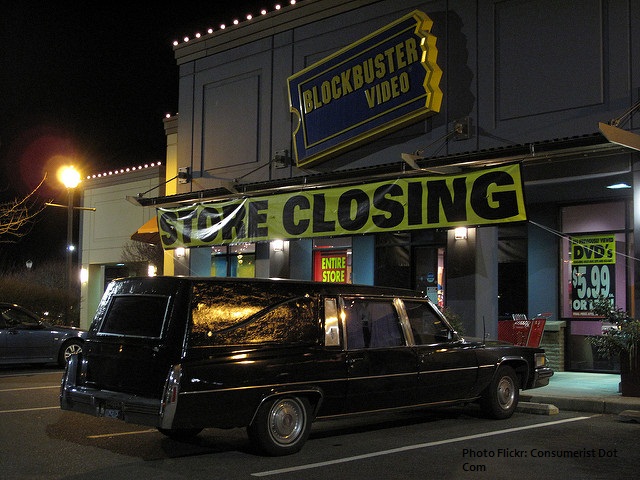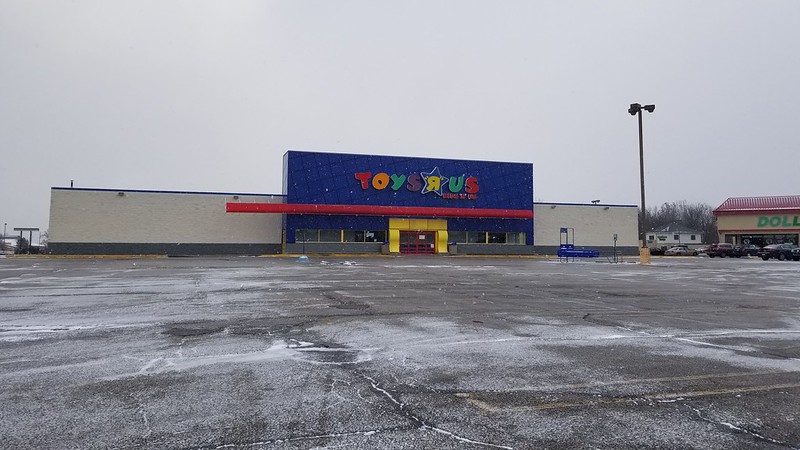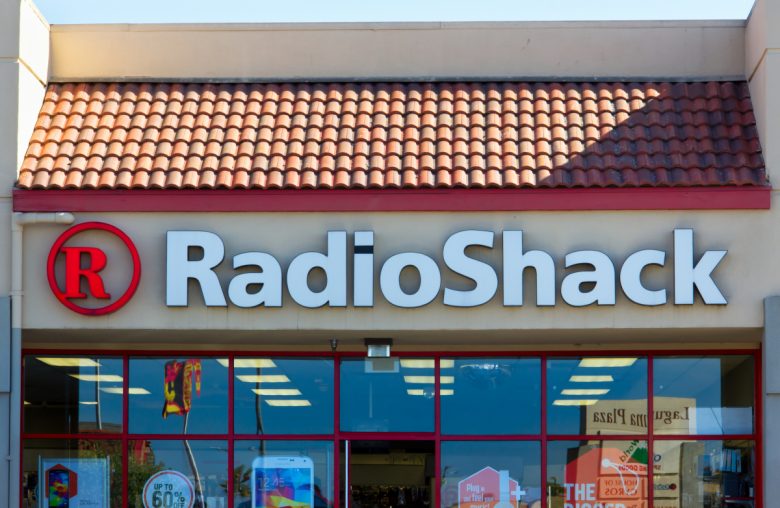Innovation is important for every business. As times change, businesses need to learn to create solutions that will help them adapt to shifts in consumer demand, technology, and the economic climate. When a business innovates the right way and at the right time, it could lead to huge gains in market share and the growth of the overall business.
When done incorrectly or too late, it could mean the death of a company. Don’t believe me? Here are 10 companies that failed to innovate in time and paid dearly for it.
1. BLOCKBUSTER

Blockbuster was the original video rental business and had over 9,000 stores worldwide. The company filed for bankruptcy in 2010, and all its remaining stores closed by 2013. How did Blockbuster fail to adapt to changing market conditions? In the late 1990s and early 2000s, Netflix emerged as a competitor with a new business model: mail-order movie rentals. Instead of having a brick-and-mortar store with rows of movies on DVDs or VHS tapes (which were becoming obsolete), Netflix would ship movies directly to customers through the mail. This service made it easier for people who didn’t want to go out shopping for videos or just wanted something specific that wasn’t available at their local store.
Another problem was that Blockbuster had built its business around renting physical DVDs instead of streaming them online like Netflix does today. When it came time to upgrade so they could play Blu-ray discs, they decided not to because it wouldn’t make sense financially since Blu-ray players weren’t very common yet, and they didn’t want customers losing interest!
2. MYSPACE
MySpace was a social networking service website that operated from 2003 to 2011. It was founded by Tom Anderson and Chris DeWolfe in 2003 and purchased by Rupert Murdoch’s News Corporation in 2005 for $580 million. In June 2009, MySpace had an estimated 100 million users who could post blogs and other content on the site. By 2008, it was the most popular social networking site in the world before dropping to third place behind Facebook and Twitter in 2010. Rupert Murdoch’s News Corporation bought MySpace in 2005 for $580 million. In 2011, MySpace sold to Specific Media and Justin Timberlake for $35 million.
However, MySpace still failed because it didn’t innovate fast enough when Facebook launched its platform in 2004, which allowed users to create a profile page with photos and information about themselves for friends to see.
3. TOYS R US

Charles Lazarus founded Toys R Us in 1948, and for several generations, it was the place to shop for toys. The company filed for bankruptcy protection in September 2018 with $5 billion in debt; it had 8,000 stores and 60,000 employees worldwide at its peak.
During its prime between 1985 and 2007, Toys R Us had sales of $11 billion—more than Walmart or Target. However, like many brick-and-mortar retail chains the company struggled to compete with Amazon and other online retailers. Toys R Us couldn’t keep up with digital competitors who could offer lower prices without being subject to state sales taxes. The company ceased operations in 2018.
4. PAN AM
This company was a major international airline that operated from 1927 until it dissolved in 1991. Pan American World Airways, Inc., commonly known as Pan Am, was the principal and largest international air carrier in the United States of America from the 1950s to the 1970s. The airline’s routes covered South America, North America (including Hawaii), Africa, Asia, and Europe in their prime. But despite its success, Pan Am struggled financially for most of its existence and eventually filed for bankruptcy in 1991. It could have improved but did not have a plan to recover from a business failure.
The company had more than 100 destinations in 52 countries on six continents when it ceased operations at midnight on December 4th, 1991. The company was $1 billion in debt when it finally shut down operations. It continues today as a brand name for some airlines worldwide; however, it no longer has any corporate entity behind it.
5. Pets.com
Pets.com was an early player in the online pet supply retail market. With the success of companies like Chewy in today’s world, it is hard to imagine why this company aimed at delivering pet supplies failed. Pets.com was unable to capitalize on being one of the first to market. The company spent too much money marketing and advertising which lead to high operating costs and unsustainable losses. It also had difficulty securing profitable supplier relationships and managing its supply chain efficiently. But all of their failures cannot be attributed to this. They were also a victim of timing.
The company was was a casualty of the dot-com bubble burst and the subsequent recession that followed. Although pet products are one of the few products that do well in a recession, Pets.com was unable to stay afloat and eventually filed for bankruptcy and liquidation in November 2000.
6. Polaroid
Polaroid was a pioneer in instant photography and launched the first commercially successful instant camera, the Polaroid Land Camera, in 1948. The camera used Polaroid’s patented technology to produce black-and-white images on peel-apart paper.
Polaroid’s innovative products were so popular that it grew into a giant corporation, with sales of about $3 billion per year by 1972 — and then failed to innovate when it needed to most.
Over time, Polaroids became more expensive than standard film cameras and lost their novelty value as other companies like Kodak and Fuji started selling similar products at lower prices. In an attempt to increase sales and regain its edge over competitors like Kodak (which had launched its line of instant cameras). Polaroid eventually shut down the production of its instant film altogether. However, it still exists today as a company focusing on consumer electronics rather than capturing memories on paper or film.
7. RadioShack
RadioShack was known as the place to go for technical innovation in the retail sector. Ironically, their lack of innovation was ultimately their downfall. The company failed to evolve with the times. It did not effectively compete with online retailers like Amazon, who offered a wider range of products at lower prices. RadioShack also suffered from a dated and unattractive store image. In the 2000’s and beyond, this imaged failed to appeal to modern consumers.
The limited range of products and being heavily reliant on mobile phones, which became commoditized, caused even more damage to the brand. There were, however, other problems with the company. RadioShack had a high level of debt and mismanagement of finances. It was a perfect storm of issues that may have been able to be overcome. But, time ran out on RadioShack. The company folded in 2020. In 2021, RadioShack’s intellectual property and its remaining operations and its online sales operation—were purchased by a Florida-based company called Retail Ecommerce Ventures (REV).
8. Blackberry
BlackBerry was once the leader in the smartphone market. The company focused on smartphones as a primarily business device. Blackberry was slow to embrace the bring-your-own-device trend. This is where employees are allowed to use their personal devices for work purposes. This led to a decline in corporate customers. The reputation as a “business phone “made it difficult to pivot as the smartphone became a personal device for just about every man, woman, and child in America. The focus on business use, and the inability to move towards touchscreens were two major reasons the company struggled.
Blackberry also failed to innovate when it came to their ecosystem. Hardware companies like Apple rely on developers to create useful apps for their customers to use. BlackBerry’s closed ecosystem limited the ability of developers to create and distribute apps. This further hindered its competitiveness.
The one thing that Blackberry did well was security. Blackberry devices were known to be more secure than other smartphones. On September 28, 2016, BlackBerry Limited announced it would cease designing its own BlackBerry devices. The company decided to pivot to focus its efforts on software security.
9. Borders

During the rise of Amazon and ebook in the mid 2000’s, experts predicted that physical books and bookstores would be a thing of the past. Retail book sellers like Books-A-Million, Barnes & Nobles and Borders were considered doomed. Many thought the industry would be gone by 2020. However, Barnes & Noble has been surprisingly resilient. The company has seemingly come back from the dead and plans on opening 30 new locations in 2023.
Borders, on the other hand, did become a casualty of changing technology. By the year 2000, Borders had established itself as an international brand. By 2003 the had 1,249 stores using the Borders and Waldenbooks names. However, 2006 would be the last year they would enjoy a profit.
The company failed to move into the online space quickly enough. Borders attempted to take advantage of the success of Amazon by forging a partnership. However, in March 2007, the company announced the end of its marketing alliance with Amazon. It went on to announce the launch of it’s own online business in 2008.
But, it was a little too late. By 2011, Borders announced that it had filed for Chapter 11 bankruptcy protection, listing $1.275 billion in assets and $1.293 billion in debts in its filing. The company closed its remaining stores in the US on Sunday, September 18, 2011 and its online store closed on September 27, 2011.
10. TOWER RECORDS
Tower Records, a once-iconic music retailer, failed to effectively compete with the rise of digital music. Tower.com, which was one of the first online music retailers, launched in 1995. However, the company had a limited range of products and was still heavily reliant on physical music sales. Their timing couldn’t have been worse as digital music’s popularity began to skyrocket in the early 2000’s.
The company also had difficulty competing with online music retailers like iTunes which launched in 2001. Tower’s competitors offered customers a wider range of music at lower prices. These companies also focused on digital music. The nail in the coffin was the crippling debt that Tower carried. In February 2004, the debt was estimated to be between $80 million and $100 million.
Photo Credit: Flickr under CC Borders
Also read:
10 Companies that Failed Due to Poor Management
9 Companies that Failed But Made Big Comebacks
5 Companies that Took Big Risks and Succeeded











Pingback: 5 Corporations that Took a Danger and Succeeded - The Owl Report
Pingback: 5 Companies that Took a Risk and Succeeded – PHL Tech Magazine
Pingback: 5 Corporations that Took a Threat and Succeeded – Webbizmarket.com
Pingback: 5 Companies that Took a Risk and Succeeded - StartUp Mindset
Pingback: 8 Corporations That Did not Develop Internationally - The Owl Report
Pingback: 8 Companies That Failed to Expand Internationally - junaidarif.live
Pingback: 8 Companies That Failed to Expand Internationally - StartUp Mindset
Pingback: 7 Worst Business Decisions of All Time | Biz Builder Mike
Pingback: 7 Worst Business Decisions of All Time - StartUp Mindset
Pingback: 10 Companies that Failed to Innovate and – Entrepreneur – Start, Run and Grow Your Business
Pingback: 10 Companies that Failed to Innovate and – Joseph Odierno Buffalo